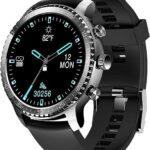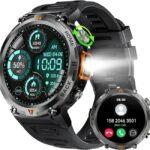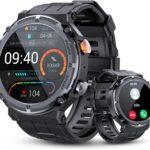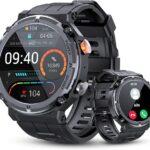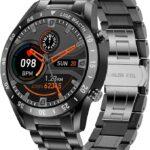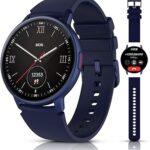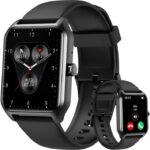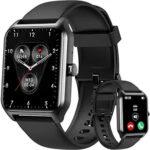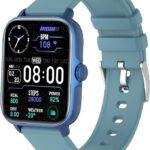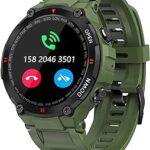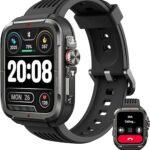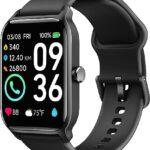The Wearable Revolution: Smart-watches Redefining Tech and Health
Smart wearables are ushering in a new era in the tech industry, propelled by the remarkable advancements in sensor technology and artificial intelligence (AI). The days when flagship smartphones like the iPhone held sole sway over the world of handheld technology are now a thing of the past. The 21st century has witnessed the meteoric rise of wearable technology, surpassing even the widespread popularity of smartphones. Notably, the COVID-19 pandemic has played a pivotal role in accelerating the adoption of smart wearables, as people increasingly recognize the paramount importance of monitoring their health, fostering an active lifestyle, and making a fashion statement in the process.
According to a recent report from the market research firm Counterpoint, India has overtaken North America to claim the top position in the global wristwatch market for the quarter ending in September 2022. The wearable market in India has experienced remarkable growth, surging by a staggering 178%, with over 12 million units shipped during the same quarter. This impressive surge can be partly attributed to indigenous brands that have actively contributed to building the ecosystem and stimulating consumer interest in this burgeoning category.
Over the years, Smart-watches have evolved into more affordable, feature-rich devices. These modern Smart-watches boast larger and higher-quality displays, including AMOLED technology and always-on display features. Additionally, they offer extended battery life and have transcended their initial purpose of step tracking.
Smart-watches have indeed transformed the way we perceive technology. Beyond mere communication tools, wearables are now viewed as indispensable companions on our fitness journeys.
Bluetooth calling is a sought-after feature, and it is now available on even budget-friendly Smart-watches, enhancing their versatility and user-friendliness. This technology facilitates seamless synchronization with smartphones.
Safety is another key aspect of Smart-watches. These devices come equipped with location tracking features, which can be invaluable for concerned parents wanting to monitor their children’s whereabouts. Moreover, Smart-watches often include an SOS feature, allowing users to quickly alert their loved ones or emergency services in times of need. As per the Centers for Disease Control and Prevention (CDC), falls are a leading cause of injury-related deaths among those aged over 65. Smartwatches can detect falls and automatically contact emergency services, demonstrating their potential to save lives. While this feature was once exclusive to high-end models, it is gradually becoming a standard offering. Numerous documented cases have underscored its life-saving capabilities, and with time, smartwatches are poised to improve their fall detection accuracy.
Voice assistants have become a staple in modern Smart-watches, shifting from traditional touch interfaces to voice-activated virtual assistants. Leading platforms such as Apple Siri, Google Assistant, and Alexa are widely supported, enabling users to perform tasks hands-free by simply conversing with their Smart-watches.
Smartwatches play a significant role in promoting a healthy lifestyle. They offer a plethora of health monitoring features, including blood pressure, body temperature, SpO2 levels, menstrual cycle tracking, and ovulation date prediction. Users can seamlessly record their health data through smartwatches and their companion apps, facilitating comprehensive medical analysis. These apps provide valuable insights, enabling users to monitor variations in their health parameters and work towards their fitness goals. They can also record calorie intake and outdoor exercise, delivering a comprehensive overview of their fitness routines. Additionally, smartwatches send timely reminders, encouraging users to stay hydrated and practice mindfulness. Some apps and wearables even empower medical practitioners to assess critical parameters and prescribe remedies, ultimately enhancing individuals’ quality of life.
The future of wearables is a promising one, driven by advancements in sensors, semiconductors, and AI. Modern smartwatches are equipped with optical sensors that continuously monitor changes in blood volume and composition using photoplethysmography (PPG). These devices are gradually incorporating features like ECG recording and emergency service alerts, potentially saving lives. Previously, such features were primarily found in high-end watches, but the democratization of technology, coupled with the “Make-in-India” wave, has made these capabilities accessible in more affordable smartwatches.
From being mere accessories, wearables have now become integral components of our daily lives. Medical research and studies increasingly affirm the value of smartwatches and fitness trackers in detecting health issues such as atrial fibrillation or stroke. Moreover, these devices play a crucial role in rehabilitation, constantly monitoring and motivating users to adopt healthier lifestyles. They serve as guides, facilitating a higher quality of life and shorter rehabilitation periods. In the future, these devices will become more powerful, compact, and cost-effective, enabling real-time biometric tracking.
The evolution of smart wearables continues to shape the way we interact with technology and the world around us. With each passing day, we witness remarkable progress in these devices, enhancing their functionalities and making them an indispensable part of our lives.
One of the key driving forces behind this progress is the rapid development of sensors and semiconductor technology. Modern smartwatches are equipped with an array of sensors that can monitor a wide range of health metrics and environmental factors. These sensors are continually improving, providing more accurate data and enabling the development of new features.
For example, some smartwatches now feature optical sensors that use photoplethysmography (PPG) to continuously track changes in blood volume and composition. This technology can provide valuable insights into a wearer’s health, including heart rate, blood oxygen levels, and even detect irregular heart rhythms. This is a game-changer in the world of personal health monitoring, giving individuals the ability to keep a close eye on their well-being.
Moreover, smartwatches(Smart-watches) are now venturing into the realm of electrocardiograms (ECGs). Some models can record ECG data, which can be pivotal in diagnosing heart conditions and alerting users to potential health issues. Additionally, these devices are becoming equipped with features that allow them to automatically alert emergency services in case of a significant health event, such as a heart attack or a fall. This technology, once exclusive to high-priced models, is increasingly available in more affordable Smart-watches, making it accessible to a broader range of users.
The “Make-in-India” wave and the democratization of technology are playing a crucial role in making advanced features more affordable and widely available. This not only benefits consumers but also drives innovation and competition in the smart wearables market, pushing manufacturers to continually improve their offerings.
Smartwatches(Smart-watches) are no longer just tools for communication and fitness tracking; they have become integral to our well-being. They don’t merely record data; they help us interpret it. With the assistance of companion apps, users can gain a deeper understanding of their health trends and make informed decisions about their lifestyles.
In this age of health consciousness, smartwatches serve as personal health coaches, providing reminders to stay hydrated, exercise, and practice mindfulness. They can even assist medical practitioners in remotely monitoring patients’ vital signs, facilitating more personalized and efficient healthcare.
As we look ahead, the future of Smart-watches is incredibly promising. These devices are on a trajectory to become more powerful, compact, and cost-effective. They will continue to push the boundaries of what’s possible, tracking biometrics in real-time and offering even more sophisticated health and lifestyle insights.
In the not-so-distant future, we can envision a seamless integration of smartwatches with smartphones, eliminating the need for carrying both devices. Until that convergence happens, smartwatches will remain our trusted companions on the journey toward better health and well-being, complementing the capabilities of our smartphones and helping us achieve our fitness and lifestyle goals. The synergy between humans and technology is ever-evolving, and smart wearables are at the forefront of this exciting transformation.
FAQ:Refurbished Smart Watches online in India 2023
Q1: How Refurbished Smart Watches online in India 2023 works?
By incorporating advanced sensors and artificial intelligence, allowing users to monitor their health, stay connected, and enjoy a wide range of features beyond basic timekeeping.
Q2: What has contributed to the growth of smartwatches in recent years?
The COVID-19 pandemic has accelerated the adoption of smartwatches, as more people recognize the importance of health monitoring, active living, and fashion-forward technology.
Q3: What are the key features of modern smartwatches?
Modern smartwatches offer a host of features, including Bluetooth calling, safety features like location tracking and SOS alerts, voice-activated virtual assistants, and comprehensive health monitoring, such as blood pressure, SpO2 levels, and menstrual cycle tracking.
Q4: Are smartwatches becoming more affordable?
Yes, smartwatches are becoming more affordable due to advancements in technology and the democratization of features. Even budget-friendly models now offer advanced capabilities.
Q5: How are smartwatches contributing to healthcare?
Smartwatches are contributing to healthcare by detecting health issues like irregular heart rhythms and facilitating remote monitoring for patients. They motivate users to make healthier choices and can provide valuable data to medical practitioners.
Q6: What can we expect from the future of smartwatches?
The future of smartwatches is promising, with compact, powerful, and cost-effective devices on the horizon. They will continue to monitor biometrics in real-time and may eventually integrate seamlessly with smartphones, eliminating the need for carrying both devices.
Q7: How are smartwatches transforming the way we view technology and health?
Smartwatches are transforming technology and health by offering a holistic approach to personal well-being. They encourage users to lead healthier lifestyles and provide valuable health insights, all while serving as fashionable and convenient tech accessories.
Q8: Can you recommend some notable smartwatches in the market?
Several notable smartwatches include the Apple Watch, Samsung Galaxy Watch, and Fitbit Versa series. The choice depends on individual preferences and specific needs.
Q9: Are smartwatches suitable for all age groups?
Yes, smartwatches cater to a wide range of age groups, from children to seniors. Their features, including safety and health monitoring, make them versatile devices for various demographics.
Q10: How can I make the most of my smartwatch for health and fitness tracking?
To maximize your smartwatch for health and fitness, regularly use the health monitoring features, follow its recommendations, and sync data with companion apps. Set personal health goals and stay consistent with tracking to achieve them.

